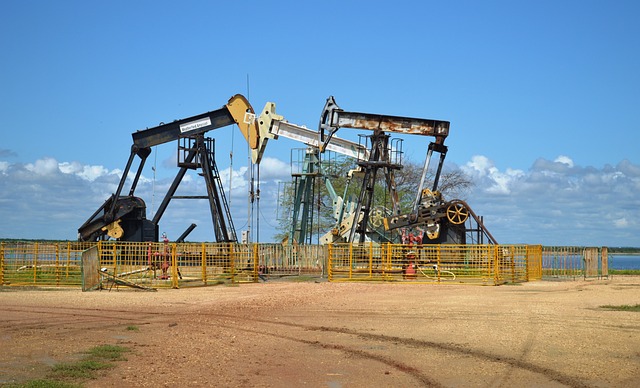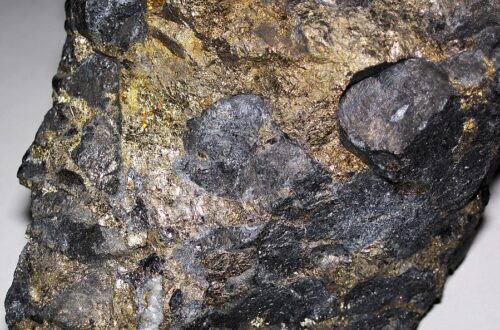
Fascinating facts about thermal energy: Surprising Insights
Fascinating facts about thermal energy
Thermal energy is the form of energy resulting from particles’ motion, such as atoms and molecules. Let’s discover the fun facts about thermal energy.
It is a critical component in many physical and chemical processes, including combustion, convection, and evaporation.
Thermal energy is ubiquitous in our everyday lives; it’s present everywhere from the heat generated by our computer processors to the warmth of a cup of hot chocolate.
In this article, we will explore some interesting facts about thermal energy and its environmental implications.
What is Thermal Energy?
What’s the concept of thermal energy? Thermal energy is a type of energy that exists within an object or system due to its temperature.
The higher the temperature, the more thermal energy exists within the object or system. This type of energy can be transferred from one HOT object to another through conduction, convection, or radiation.
One surprising insight about thermal energy is that it is found all around us, even in seemingly cold objects like an ice cube.
While ice may feel cold to the touch, it contains a significant amount of thermal energy since its temperature is still above absolute zero (-273°C).
Water has a much higher thermal conductivity than air which means that heat transfers much faster through water than air.
Another interesting fact about thermal energy is that it can be converted into other forms of energy like electrical or mechanical.
For example, power plants use steam generated by heated water to turn turbines and generate electricity. This process converts thermal energy into kinetic and then electrical energy.
What is the difference between thermal and kinetic energy?

Thermal energy and kinetic energy are two important concepts in the field of physics.
Thermal energy is the total amount of energy that a substance contains due to the movement of its atoms and molecules.
It is also known as heat energy, which means it can be transferred from one body to another.
On the other hand, kinetic energy is the energy possessed by a moving object due to its motion.
One major difference between thermal and kinetic energy lies in their sources.
Thermal energy comes from within matter itself, while kinetic energy comes from an object’s motion or movement through space.
Additionally, thermal energy involves random molecular movements within an object, whereas kinetic energy results from organized motion in a particular direction.
Another difference between these two types of energies lies in their practical applications.
Thermal energy is used for processes such as heating buildings, cooking food, or generating electricity through steam turbines.
Kinetic Energy
Kinetic energy has numerous practical applications as well – it is used for transportation (e.g., cars), electricity generation (e.g., wind turbines), and many more industrial processes where mechanical work needs to be done.
Although both thermal and kinetic energies are forms of physical energies that have various industrial applications separately but uniquely according to their properties like source and application scope.
Understanding these differences helps people grasp how they work independently or together when dealing with different fields such as physics or engineering.
What are the different types of thermal energy?

Thermal energy is the energy that an object possesses due to the motion of its particles. There are two main types of thermal energy: sensible and latent.
Sensible heat is heat that can be sensed or measured by a thermometer. It refers to the amount of heat required to change the temperature of an object without changing its state.
Latent heat, on the other hand, refers to the amount of heat required to change the state of matter from solid to liquid state or from liquid to gas.
Another type of thermal energy is radiant heat, which is also known as electromagnetic radiation.
This type of thermal energy travels through space at a speed equal to that of light and can be absorbed by any object it encounters.
Radiant heat is responsible for warming up objects to a higher temperature in our planet’s atmosphere.
A convection current is the movement of fluid due to a difference in temperature within that fluid. This phenomenon is essential for various natural processes, including weather patterns and ocean currents.
Warm fluids or gases rise upwards while cooler ones sink, creating a circular motion that helps distribute heat evenly throughout the medium.
In addition to being crucial for natural phenomena, convection currents have significant applications in industries such as engineering and manufacturing.
For example, they are used in air conditioning systems to cool down rooms by circulating cold air. Convection currents are also utilized in cooking appliances like ovens and stovetops.
Furthermore, understanding convection currents helps scientists predict and understand global climate change better.
The Earth’s atmosphere
The Earth’s atmosphere operates based on these currents, which help regulate the temperature difference across the globe.
The process of global warming has been shown to alter these movements significantly, causing an imbalance in our planet’s climate systems.
Therefore, studying convection currents can provide valuable insights into how we can mitigate the impacts of climate change effectively.
Finally, there’s chemical energy, which involves a chemical reaction between different substances that release or absorb thermal energy.
For example, when fuel burns inside an engine, it releases thermal energy that drives its pistons and creates mechanical energy.
Understanding these different types of thermal energies allows us to better understand how they work in our daily lives and their impact on our environment.
Sources of Thermal Energy

Thermal energy is the energy that is produced by heat. It can be found in many different sources, examples of thermal energy include fossil fuels, nuclear power plants, geothermal energy, and solar power.
Fossil fuels are a non-renewable source of thermal energy that comes from the remains of organisms that lived millions of years ago. These fuels include coal, oil, and natural gas.
Renewable energy sources such as Nuclear power plants also produce thermal energy through nuclear reactions.
The heat generated by these reactions is used to create steam which in turn spins turbines to generate electricity.
Geothermal energy comes from the Earth’s core and can be accessed through drilling into underground reservoirs of hot water or steam.
Finally, solar power harnesses the sun’s thermal energy through photovoltaic cells or concentrated solar panels which convert sunlight into electricity.
Thermal energy can be found in a variety of sources ranging from fossil fuels to renewable sources such as geothermal and solar energy.
Understanding these sources helps us to better appreciate the importance of this form of energy both for our daily lives and for our planet’s future sustainability efforts.
Uses of Thermal Energy
Thermal energy is a form of energy that results from the movement of particles in a substance.
It is one of the most widely used forms of energy, with applications in industries such as manufacturing, transportation, and power generation.
One common use of thermal energy is for heating homes and buildings during cold weather.
This is accomplished through the use of boilers or furnaces that burn fossil fuels to produce heat which is then distributed throughout the building.
Another application of thermal energy is in cooking food. Most modern kitchens are equipped with electric or gas stoves that utilize thermal energy to cook food.
In addition, some foods such as popcorn and roasted coffee beans require high levels of thermal energy to be properly prepared.
Thermal energy also plays an important role in electricity production. Many power plants generate electricity by using steam turbines which are powered by steam produced by burning fossil fuels or nuclear reactions.
The steam creates pressure which turns blades on the turbine generating mechanical force that drives generators producing electrical power for distribution across networks powering homes, businesses and cities worldwide.
Advantages of Thermal Energy

Thermal energy is a type of energy that results from the movement of particles within an object. One of the main advantages of thermal energy is its availability.
This form of energy can be found in abundance in natural resources such as geothermal reservoirs, hot springs, and underground steam vents.
In addition to this, it also has a very low impact on the environment compared to other forms of non-renewable energy like fossil fuels.
Another advantage of thermal energy is its versatility. It can be used for a wide range of applications such as heating water, generating electricity, and even cooking food.
Additionally, it is highly efficient and cost-effective since it requires minimal maintenance once installed.
Thermal energy systems are also known to have a long lifespan thereby making them an ideal choice for homeowners looking for sustainable ways to power their homes.
Thermal energy is abundantly available, which makes it an attractive source of energy for various purposes.
It is easy to access and use, as it can be obtained from a wide range of sources such as the sun, geothermal activity, burning fuels, or even the human body.
Humans have been utilizing thermal energy for centuries; from lighting, and fires to heating homes and cooking food.
Interesting Facts about Thermal Energy
Thermal energy conversion technologies are becoming increasingly popular due to their low environmental impact compared to traditional fossil-fuel-based power plants.
One example is geothermal power plants that convert the Earth’s natural heat into electricity.
Thermal energy storage systems have also been developed to help store excess thermal energy generated during peak hours for later use when demand increases.
Another advantage of thermal energy is its flexibility in terms of application. Thermal energy can be used for various purposes, including heating water, generating electricity, and cooking food.
For instance, solar water heaters are one way that thermal energy is utilized to heat water efficiently without the need for electricity or gas.
Furthermore, thermal power plants generate electricity by harnessing the heat from burning fossil fuels or nuclear reactions.
Moreover, thermal energy can be used in cooking as well. Thermal cookers use a vacuum-insulated container to keep food warm for an extended period after being cooked on a stove or other heat source.
The cooker retains heat so well that it continues to cook the food even after it has been removed from the stove or oven.
This method of cooking is highly efficient because it saves time and reduces the amount of fuel needed to prepare meals.
In addition to its versatility and widespread availability, thermal energy also has numerous other benefits that make it a popular alternative source of energy today.
Facts about Thermal Energy
One of the key advantages of thermal energy is its ability to be stored and used on demand, unlike some other renewable sources such as wind or solar power.
This means that thermal energy can be used to provide consistent and reliable power no matter the time of day or weather conditions.
Another benefit of thermal energy is its low cost compared to fossil fuels. While there are some upfront costs associated with setting up a thermal energy system, once in place it can provide significant savings on monthly utility bills.
Additionally, many governments around the world offer incentives for businesses and individuals who invest in renewable sources of energy such as thermal power.
Overall, while there are still some challenges associated with implementing the widespread use of thermal energy, it remains an attractive option for those looking for a clean and sustainable source of power that won’t break the bank.
As technology continues to improve and more resources are directed toward developing new ways to harness this powerful form of energy, we can expect to see even greater adoption rates in the years ahead.
Disadvantages of Thermal Energy

Despite the many benefits of thermal energy, several disadvantages come with its use.
For one, the extraction and conversion process of thermal energy can be quite expensive due to the high costs involved in drilling wells and constructing power plants.
This can result in higher electricity bills for consumers who rely on this type of energy.
Another disadvantage is that thermal power plants often require vast amounts of water to cool down their equipment, which can be detrimental to aquatic ecosystems if not managed properly.
Additionally, these plants emit greenhouse gases such as carbon dioxide and methane into the atmosphere, contributing to climate change and air pollution.
Furthermore, unlike renewable sources like solar or wind power that have a continuous supply, thermal energy comes from finite resources such as coal or natural gas that will eventually run out.
As a result, we need to explore alternative forms of clean energy sources that are sustainable in the long term.
5 Interesting Facts about Thermal Energy
1. Thermal Energy is Everywhere: Thermal energy is found everywhere in our daily lives, from the warmth we feel on a sunny day to the heat generated when baking or cooking food. Every object around us contains thermal energy to some extent.
2. The Sun is the Ultimate Source of Thermal Energy: The sun is the most important source of thermal energy on Earth. It is responsible for heating Earth’s surface and atmosphere, which in turn creates weather patterns and drives ocean currents.
3. Heat Transfer Occurs in Three Ways: There are three ways that heat can be transferred: conduction, convection, and radiation. Conduction occurs when heat moves through a solid material; convection happens when warm air rises and cooler air falls; and radiation refers to the emission of electromagnetic waves that carry thermal energy.
4. Insulators are Important for Temperature Control: Insulators such as wool, foam, or fiberglass help limit heat transfer by trapping pockets of air which reduce conduction. The use of insulation materials helps buildings retain their indoor temperature during varying outside temperatures.
5. Thermal Energy can also cause Destruction: While thermal energy has many useful applications, such as being used to power machinery, power plants, etc, it can also have negative effects like causing forest fires, and damaging crops among others if not well regulated hence should be handled with great care.
Environmental implications of thermal energy
Thermal energy is a type of energy that is generated by the movement of particles within a substance. While thermal energy has many applications, it also has significant environmental implications.
One of the major concerns associated with thermal energy is its contribution to global warming as the temperature rises.
Thermal power plants emit large amounts of carbon dioxide and other greenhouse gases into the atmosphere, which ultimately contribute to climate change.
One surprising fact about thermal energy is that it is responsible for weather patterns and changes in climate.
The sun’s thermal energy heats up the Earth’s atmosphere, causing air currents and weather fronts that affect temperature, rainfall, and other environmental factors.
Another concern associated with thermal energy is its impact on water resources. The process of generating thermal energy requires large amounts of water for cooling purposes.
This can lead to significant depletion of freshwater resources in areas where water scarcity is already a problem.
Additionally, the warm water that is released back into lakes and rivers can have negative impacts on aquatic ecosystems, disrupting natural habitats and potentially harming fish and other wildlife.
Overall
Overall, while thermal energy has played an important role in meeting our growing demand for electricity and heating, it’s important to consider its environmental implications as we move forward.
By investing in cleaner forms of renewable energy like solar or wind power, we can reduce our reliance on fossil fuels and minimize the negative impacts associated with traditional forms of thermal energy generation.





One Comment
Pingback: